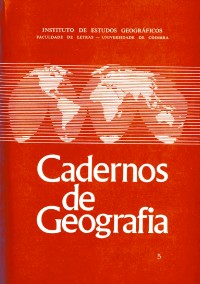Please use this identifier to cite or link to this item:
https://hdl.handle.net/10316.2/40537| DC Field | Value | Language |
|---|---|---|
| dc.contributor.author | Cravidão, Fernanda Delgado | - |
| dc.date.accessioned | 2016-12-16T00:22:08Z | |
| dc.date.accessioned | 2020-09-22T12:43:57Z | - |
| dc.date.available | 2016-12-16T00:22:08Z | |
| dc.date.available | 2020-09-22T12:43:57Z | - |
| dc.date.issued | 1986 | - |
| dc.identifier.issn | 0871-1623 | - |
| dc.identifier.issn | 2183-4016 (digital) | - |
| dc.identifier.uri | https://hdl.handle.net/10316.2/40537 | - |
| dc.description.abstract | Localizada tradicionalmente nos dois principais centros urbanos do país, a manufactura e comercialização do ouro em Portugal, voltou-se quase sempre para a média e alta burguesia. As sucessivas crises que o país atravessou, principalmente durante os séculos XVIII e XIX, contribuem para o esfriamento de todas as artes, a que a Ourivesaria não se furta. As Corporações de ourives que tinham um papel disciplinador no trabalho do ouro e prata, perdem grande parte da sua importância. Todavia, em 1886 é publicado o Regulamento das Contrastarias, que permitirá o alargamento do comércio dos metais preciosos. Os processes de fabrico evolucionam e aumenta o número de oficinas. Surge a ourivesaria popular, que tem na população rural o seu principal mercado. Aparecerá então, em finais do seculo XIX, um novo elemento na comercialização do ouro em Portugal: os ourives ambulantes. Pretende-se com esta nota mostrar como a partir do concelho de Cantanhede se difundiu no país uma importante comunidade de ourives. Embora se trate de uma amostra limitada, julgamos que ela adquire alguma importância, não só porque sugere o aparecimento local de um grupo social com maior poder económico e político mas porque mostra a função que os ourives ambulantes desempenharam na difusão do comércio do ouro em Portugal. | por |
| dc.description.abstract | Traditionnellement située dans les deux principaux centres urbains du pays, la manufacture et commercialisation de l'or au Portugal, a été presque toujours privilège de la moyenne et haute bourgeoisie. Les successives crises subies par le pays, surtout pendant le XVIIIème et XIXème siècles, contribuent au refroidissement de tous les arts et l'Orfèvrerie n'est pas exception. Les Corporations d'orfèvries qui avaient un rôle de mainteneurs de la discipline dans le travail de l'or et de l'argent, perdent la plupart de leur importance. En 1886 est publié, toutefois, le «Regulamenlo das Contrastarias» qui permitira l'élargissement du commerce des métaux précieux. Les procès de fabrication évolutionnent et augmentent la quantité d'ateliers. Survient l’orfèvrerie populaire, qui a dans la population rurale son principal marché. Dans les dernières années du XIXème siècle, apparaîtra alors un nouveau élément dans la commercialisation de l'or au Portugal : les orfèvriers ambulants. On veut, avec cette remarque, montrer comment à partir de la municipalité de Cantanhede une importante communauté d'orfèvriers s'est diffusée dans le pays. Bien que ce soit une question d'aperçu limité, on croit qu'il acquiert une certaine importance, non seulement parce qu'il suggère l'apparition locale d'une couche sociale avec un pouvoir économique et politique plus grand mais aussi parce qu'il montre le rôle accompli par les orfèvriers ambulants dans la diffusion du commerce de l'or au Portugal. | fra |
| dc.description.abstract | In Portugal, the manufacture and the commercialization of gold was traditionally concentrated in the two main urban centres of the country. It was mainly used to serve the middle and upper classes. During the 18th and 19th century the country suffered several successive crisis, which certainly helped to diminish the enthusiasm towards arts, including jewellery. The jeweller's Corporations which used to direct and discipline the gold and silver works, lose, up to a point, their importance. However, in 1886 the Regulamento das Contrastarias is published and this is going to allow the expansion of precious metals commerce. The process of manufacture evolves and the number of workshops increases. Then, the popular jewellery appears, which finds among the rural population its main business. By the end of the 19th century, a new case turns up in the commercialization of the gold in Portugal: the pedlar jeweller. Our aim, after what was said, is to show, how an important jeweller's community spreads throughout the country, starting from one point: Cantanhede. Although we understand that, this is a very narrow sample, we do think that this acquires some importance, not only because it suggests the local birth of a social group with much bigger economical and political power, but it also shows the role that the pedlar jewellers played in the decentralization of the commerce of gold in Portugal. | eng |
| dc.language.iso | por | - |
| dc.publisher | Faculdade de Letras da Universidade de Coimbra | - |
| dc.rights | open access | - |
| dc.title | A difusão dos ourives em Portugal: o concelho de Cantanhede e a importância da freguesia de Nossa Senhora das Febres | por |
| dc.type | article | - |
| uc.publication.collection | Cadernos de Geografia nº 5 | - |
| uc.publication.firstPage | 15 | - |
| uc.publication.issue | 5 | - |
| uc.publication.lastPage | 42 | - |
| uc.publication.location | Coimbra | - |
| uc.publication.journalTitle | Cadernos de Geografia | - |
| dc.identifier.doi | 10.14195/0871-1623_5_2 | - |
| uc.publication.orderno | 2 | - |
| uc.publication.area | Ciências Sociais | - |
| uc.publication.manifest | https://dl.uc.pt/json/iiif/10316.2/40537/233705/manifest?manifest=/json/iiif/10316.2/40537/233705/manifest | - |
| uc.publication.thumbnail | https://dl.uc.pt/retrieve/11482733 | - |
| item.grantfulltext | open | - |
| item.fulltext | With Fulltext | - |
| Appears in Collections: | Cadernos de Geografia | |
Files in This Item:
| File | Description | Size | Format | |
|---|---|---|---|---|
| a_difusao_dos_ourives_em_portugal.pdf | 5.13 MB | Adobe PDF |  |
Items in DSpace are protected by copyright, with all rights reserved, unless otherwise indicated.
